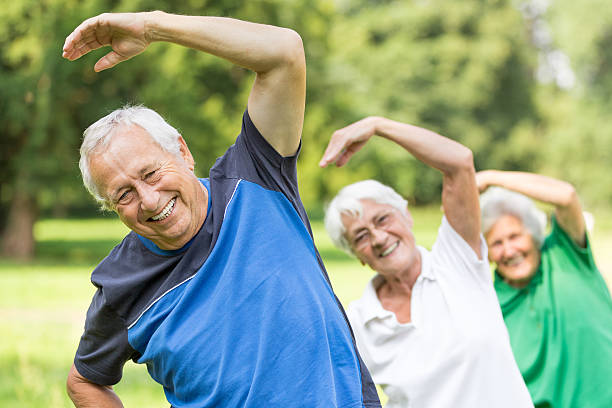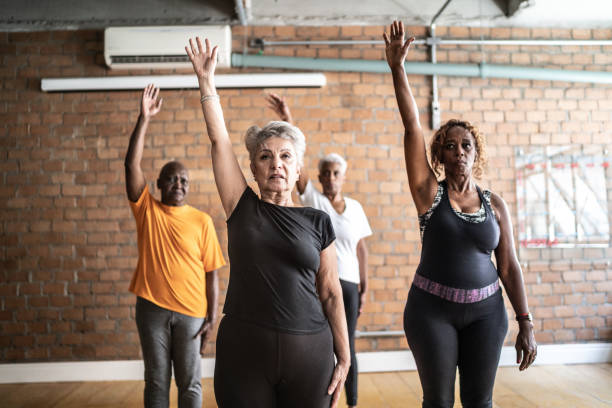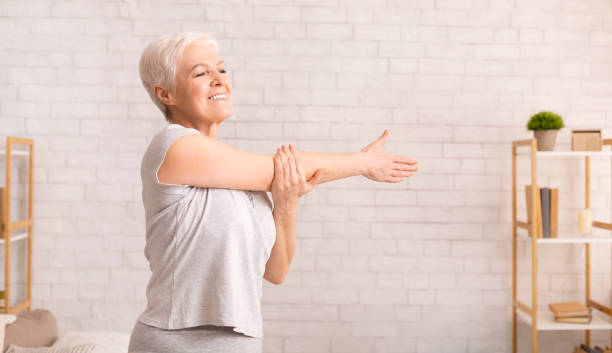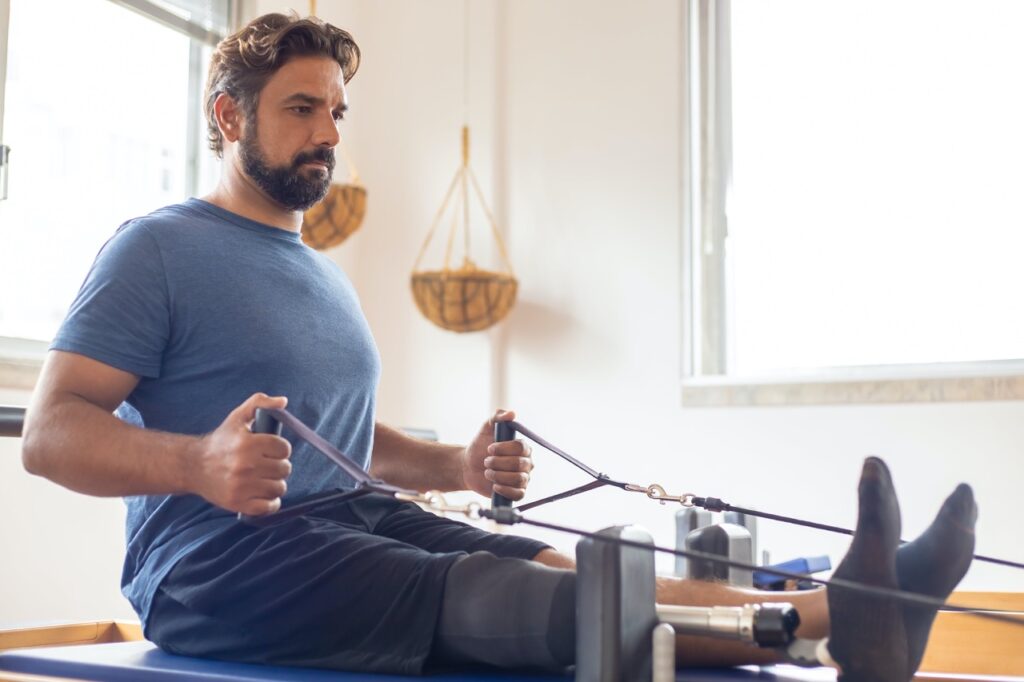Fitness Habits, Workouts
Is Pilates Suitable For The Elderly
Pilates is a low-impact exercise that is popular with people of all ages. However, elderly citizens are hesitant to attempt Pilates because they are concerned whether it is appropriate for their age group. In this article, we will look at the issue “Is Pilates suitable for the elderly?” and provide you the facts you need to make an informed decision about whether Pilates is suited for you.
Our bodies change as we age, making certain types of exercise more difficult to perform. Pilates is frequently advised for seniors since it is a moderate form of exercise that can be easily adapted to match the demands of the elderly. Pilates can help seniors improve their flexibility, balance, and strength while putting less load on their joints. However, before beginning any new exercise regimen, contact with your doctor, especially if you have any pre-existing health concerns.
In the following parts, we will look at the benefits of Pilates for seniors, as well as some of the factors to consider when beginning a Pilates program as an older adult. We will also provide you with some pointers for getting started with Pilates and getting the most out of your workouts.

Benefits of Pilates for the Elderly
Pilates is a low-impact exercise that provides several benefits to seniors. It focuses on regulated movements and breathing techniques to increase strength, flexibility, and balance. In this section, we’ll talk about the benefits of Pilates for the elderly.
Improving Balance and Stability
As we age, our balance and stability decline, increasing the risk of falling and injury. Pilates can assist improve balance and stability by strengthening the core muscles that are in charge of sustaining them. Pilates exercises for balance and stability include standing leg exercises, seated exercises, and exercises with a stability ball.
Enhancing Flexibility and Mobility
Flexibility and mobility are critical for living a healthy and active life as we age. Pilates can help you gain flexibility and mobility by stretching and extending your muscles. Spinal stretches, hip stretches, and shoulder stretches are all Pilates movements that promote flexibility and mobility.
Strengthening Muscles and Joints
Pilates can help strengthen muscles and joints, so improving general health and lowering the risk of injury. Weight-bearing exercises, resistance exercises, and exercises using a resistance band are all examples of Pilates exercises that target muscle and joint strength.
In addition to the benefits listed above, Pilates can assist enhance bone density, muscle mass, and overall health. It is a safe and effective workout for seniors that can be modified to meet the needs of people with varying degrees of fitness and mobility.
Overall, Pilates is an excellent exercise for seniors who want to enhance their strength, balance, flexibility, and overall health. It is a low-impact workout that can be performed at home or in a studio under the supervision of a certified instructor.

Adapting Pilates for Seniors
As we age, it is critical to alter our workout routine to ensure that we can remain active and healthy without putting undue strain on our bodies. Pilates is a low-impact workout that may be tailored to the needs of seniors. In this section, we will look at how to modify Pilates routines and use props to make them more accessible.
Using Props and Modifications
One of the benefits of Pilates is that it can be performed with a number of props, including resistance bands, foam rollers, and stability balls. These props can be used to adapt workouts, making them more accessible to elders. For example, if a senior has limited mobility, they can utilize a chair or a wall as support while exercise. The reformer and chair are also useful pieces of equipment for modifying exercises and providing support for elders.
Special Considerations for Common Health Issues
Seniors suffering from arthritis, osteoporosis, or hip replacement must exercise caution when performing Pilates. For example, a senior with arthritis should avoid high-impact exercises in favor of low-impact exercises that are gentler on the joints. Pilates movements can be adapted to assist seniors with osteoporosis by minimizing forward bending or twisting. Seniors who have had a hip replacement should avoid performing exercises that impose strain on the hip joint, such as leg circles or hip extension.
In conclusion, Pilates is an excellent exercise for seniors since it can be tailored to their specific needs and skills. Seniors can safely practice Pilates with props and adjustments and benefit from increased strength, flexibility, and balance.

Starting a Pilates Routine Safely
If you’re an elderly person wishing to start a Pilates program, you should do so carefully. Pilates is generally safe for seniors, but it’s important to contact with a doctor before beginning any new fitness routine. Here are some actions you may take to guarantee a safe and productive Pilates routine.
Consulting with Healthcare Providers
Before beginning any new fitness regimen, we recommend speaking with a healthcare physician. This is especially essential for elderly, as exercise may have an impact on their underlying medical conditions. A doctor can evaluate your health and advise you on what sorts of exercise are appropriate for you.
Choosing the Right Pilates Class
After consulting with a healthcare provider, you can begin looking for a Pilates class. When selecting a class, you should consider your fitness level and any physical limitations you may have. There are various sorts of Pilates classes, such as mat Pilates and chair Pilates. Mat Pilates is done on a mat on the floor, whereas chair Pilates is done using a chair for support. If you’re new to Pilates, we recommend starting with a beginner class and progressing as you get more comfortable with the routines.
It is also critical to select a Pilates facility and instructor with experience dealing with elders. Look for a studio that provides lessons just for seniors or has instructors who are certified in senior fitness. A qualified instructor will be able to alter exercises to meet your specific requirements and limits.
In conclusion, beginning a Pilates routine can be a safe and effective approach for seniors to remain active and healthy. By speaking with a healthcare physician and selecting the appropriate Pilates class, you may assure a safe and pleasurable workout.

Maintaining an Active Lifestyle with Pilates
Pilates is a workout that can help seniors maintain an active lifestyle. It’s a low-impact workout that can aid with flexibility, balance, and posture. Pilates can also boost vitality and confidence, which can be beneficial to general physical health.
Pilates has the advantage of being customizable to meet the goals and fitness levels of individual clients. This implies that seniors can take Pilates sessions suited to their unique talents and limitations. Pilates can be performed standing, sitting, or lying down, making it an adaptable workout for seniors who may struggle with specific exercises.
Another advantage of Pilates is that it helps improve flexibility. As we age, our muscles and joints might stiffen, making it difficult to move around and do daily tasks. Pilates can help you develop your flexibility and range of motion, making it easier to walk and bend.
Pilates can also be a stress-relieving and soothing activity. This is especially advantageous for elders, who may have health concerns that are exacerbated by stress. Pilates can help seniors feel more calm and comfortable, which can benefit both their physical and emotional health.
Overall, Pilates can be an excellent fitness option for seniors who wish to stay active. It can boost physical fitness, increase flexibility, and encourage relaxation. Seniors who want to attempt Pilates should talk to their doctor first to be sure it’s safe for them.
Conclusion
The cognitive benefits of Pilates have become evident. The mind-body connection fostered through mindful movement and focused breathing not only enhances physical coordination but also provides a valuable mental workout. As seniors engage in Pilates, they not only strengthen their bodies but also promote cognitive function and mental well-being.
In addition to the physical and cognitive advantages, the inclusive nature of Pilates has stood out. Whether a senior is a seasoned fitness enthusiast or someone new to exercise, Pilates can be adapted to accommodate varying fitness levels and health conditions. This inclusivity ensures that individuals of all backgrounds can partake in the benefits of Pilates.
In conclusion, my exploration into whether Pilates is suitable for the elderly has affirmed its potential as a valuable tool for promoting holistic well-being. The combination of physical, cognitive, and inclusive elements makes Pilates a compelling option for seniors looking to stay active, improve their overall fitness, and enhance their quality of life. As a versatile and accessible form of exercise, Pilates has proven to be well-suited for the diverse needs of the elderly population.
Journey of self discovery


